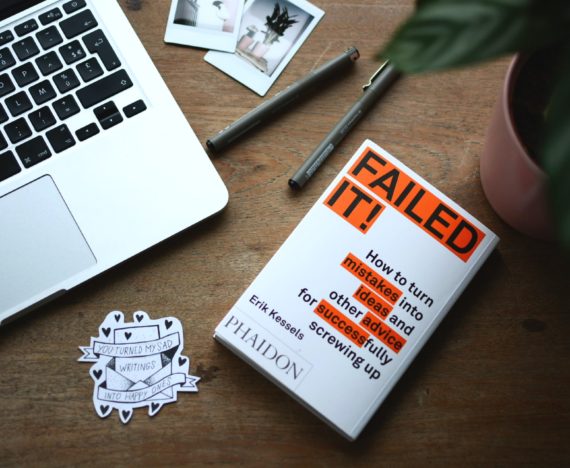Growth Summit Recap
Over the last 2 days (Nov 3rd and 4th) I have been attending the Growth Summit hosted by the killer team at Demand Curve. I am going to be honest, I didnt expect much. The usual boring old self serving sessions with hopefully one or two nuggets of gold I could take away and use. What I got was much different.
Instead of the usual dry zoom interviews it was two really fun, full days of learning, asking questions and frantically taking notes for the entire chat section. While some people messaged me on LinkedIn later and said “great growth tactic” I actually was doing this for me in the beginning but so many peopole like the notes I decided I’d share them and I am glad I did.
I do plan on following up with every single one of the speakers from that day and getting more context (and any corrections) on the notes and perhaps if they are generous with their time they will be open to a short interview or discussion I can post going deeper. Until then enjoy.
Without further ado, here are my unfiltered notes below. I hope they help those of you who were there and maybe those of you who weren’t.
Sessions
Agency Growth
How to grow an agency sustainably, without drowning in work
Speakers


How to get from level 1 consultant turned “agency” to lvl 2 – agency for realsies
- Have sales always be on
- Divorce yourself from the work to focus on growth and management
- Recognise that agency growth needs to be different than Freelancer growth
- The bigger you get the more youre in the HR business as the founder
Why Agencies Don’t Scale
- They dont charge enough
- Contracts are too small
- Reducing the # of relationships you have to manage w clients is better because they define long term success
- You can start growing by just asking for more money (obvs deliver also)
- The discipline of building an agency is different to doing marketing
- Not everyone bigger than you is a good operator so be careful on who you follow.
- Thinking about operations challenges you have seen and plannign to avoid them is important as you scale up
- Think about ways to promote and compensate fantastic practitioners like management (if they have no interest or skills in mgmt)
- Mgmt teams have more EQ orientated training than practitioners
- If you create the conditions in which people thrive you are good at mgmt
Books & Resources
- High Output Mgmt by Andy Grove
- The Daily Drucker by Peter Drucker,
- Googles Mgmt Training on OKRs on Rework w Google,
- 15 commitments of conscious leadership (book),
- Reinventing Organisations (book),
Notes on the resources
- As a leader think about learning and sharing these things with your team on a regular basis.
- The sales story is something you should be looking thinking about a lot
- Thinking about your services and what it takes then scaling that out so that you can identify future issues before you get to them
- Almost all of your models wont work out the way you think but understanding where you DONT want to end up is helpful
Tool Stack Used by the Speakers
- kitchn.io – Performance marketing and Automation.
From their website; “Kitchn brings the power of software building and automations to companies who want to scale their performance marketing in a repeatable and systematic way.” - Slack – You know what slack is but if you don’t – Slack is the collaboration hub that brings the right people, information, and tools together to get work done.
- superblockshq.com – All-in-one internal tooling platform for developers
- ClickUp – One app to replace them all. – All of your work in one place: Tasks, Docs, Chat, Goals, & more
- Segment – Segment is a customer data platform (CDP) that helps you collect, clean, and control your customer data.
- Fivetran – Stream data into your warehouse for advanced analytics. Fivetran was built to enable analysts to access their business data.
- Notion – A new tool that blends your everyday work apps into one. It’s the all-in-one workspace for you and your team.
Setup; Fuji xt3 camera,
B2B Growth
How to reach the right decision makers with the right message
Speakers
Thoughts on B2B Growth
- It REALLY is all about the team and the people you bring in and work with. When you’re somewhere that recognizes that and appreciates it you can feel that firsthand.
- The job of a great CMO or marketing leader is to build the best team. You can’t do the work. Your main job is to facilitate others in doing the job, in growing and accessing their potential.
- Marketing growth is a lot about uncertainty
- To grow and improve you have to give up control of the notion that you can influence everything. You must succumb to this fact and communicate it up the chain because failure will happen.
- If you communicate this mindset you will earn more trust and get better results in the long term. But its a mental battle!
- Failures will happen, so how do you present it to the CEO or the board? How to present a failure;
- Instill this culture in them above and communicate through the process;
- Be upfront beforehand
- Present your hypothesis and what you will do to test it
- Update execs regularly and get buy-in.
- You want to ensure non surprises to them.
- Instill this culture in them above and communicate through the process;
On the Marketing Landscape Now
- How has marketing situation changed now that companies are restructuring and going digital?
- Its great, lines of communication are more direct now than they were years ago and niching into your market and who is your customer allows way better communication
- Skimming the fat of spend from Tradeshows and just dialling in on one channel or aspect of a channel are showing much better results and is more possible than ever. It allows for greater leverage from your efforts. However the fundamentals should always be there.
- Example from Sangram; Holding a 20 person webinar for CMOs only and once the limit is set they turn people away. Creating scarcity and exclusivity as well as an easy point of difference.
- On Making the Transition (or managing it);
- You should always be questioning;
- Why are we doing this?
- Do we still need to be doing this?
- Is it important?
- You should always be questioning;
Doing Stuff is the enemy. Alignment to goals is the highest priority.
Sangram
What is important?
- Imagine what is authentically you and is a MUST do.
- A must do is some form of action that drives business value (an action that drives business value).
- The intersection of those things on a 2×2 shows you what is most important.
- Example; Starting a podcast or newlsetter; Is it something you actually would like? Will it drive busines value? Is it really what you want?
“Nobody wants to do a podcast what people want is to have an audience”
Sangram
- If you want to have an audience then document don’t create. Just talk about your journey. Its not only great for you but its a creative outlet and something that allows you to express yourself and learn.
On their plans and thoughts for 2024 and beyond
- Sangram
- How to close cross-functional skill gap. Marketers are all siloed into their areas away from sales and the other departments and he thinks that in the future we are going to have to be way more cross functional to be effective. When was the last time you talked to a CFO? Sales?
- Kevin
- How do you exploit your long term competitive advantage you have now until it runs out?
- There was a lot here but all I got was that you want to find what channels are working best for you and lean into them hard while you can.
- How do you exploit your long term competitive advantage you have now until it runs out?
- Dave
- The way we really grow is through referrals, organic and WOM but its harder to strategise for.
As a marketer you need to understand how to build a strategy around that. It comes down to;- Having a strong brand
- Instilling affinity for your brand
- The way we really grow is through referrals, organic and WOM but its harder to strategise for.
The fact is that selling to a business is different than selling to a person for one big reason. And that is, when you sell to a business, the person is spending someone else’s money….They’re asking themselves, “What will I tell my boss?”
Seth Godin – On Episode 244 of the Giant Robots Smashing Other Giant Robots Podcast
Resources and Giveaways
- Online Geniuses Slack was mentioned as a great place for smart like minded marketers.
- Frebie – Sign up at retool.com/startups for a free year ($2k) of Retool credits. Use the code summit2k
Audience growth
How to build a loyal following and turn your audience into customers
Speakers
On Growing an Audience
Noah
- Over the last 10 years the medium has shifted from guest posts to retweets but the basic fundamentals are the same for building an audience. Stick to them and apply them to whatever the medium is now.
A lot of people want to build an audience but no one wants to put the work in for a long period of time
Noah Kagan
Dan
- This is a game of consistency. You have to show up to get anywhere. People want to just post one podcast this month, then one in 3 months then 2 in a week or tweet whenever the mood strikes and then they get nowhere. Because they have no consistency.
- Keeping an eye out for what is working and going well is important when growing an audience. Stay tuned into what people like and respond to.
- Dan’s best practices for audience growth
- Consistency is #1 in growing.
- Content market fit. If you don’t have it. You won’t get far.
- Its all about the audience. Be there to serve them.
Noah Kagans thoughts on content market fit;
- You should be thinking about
- Who is the audience before you start that content.
- What are the content categories that people who love your subject really want to hear about? Delve into that.
- what is the way I am going to build my audience (the topics and things you will cover) and,
- where am I going to connect with my audience (the medium) for Noah right now that’s his YouTube channel and then his Newsletter
- Content ROI – Eg Tweet storms are a ton of work vs shorter messages.
- The key is finding your audience then finding content they like and then expanding your audience by testing new things and seeing what the response is.
On Power Using Twitter
- Twitter advanced search
- Look for extremely specific content on a topic from top creators or top performing tweets on a topic. This is underleveraged.
- Sahil
- It is very hard to grow on Twitter with single tweets.
- If you’re cold starting Twitter you need to do threads.
- Conversion to followers on threads is significantly higher (Sahil has data on this apparently).
- Story threads have gained a lot of success in the past but Sahil is sceptical.
- Comments are just as helpful as retweets. If bigger accounts comment its super powerful. Bigger accounts wont retweet generally but they will comment.
- The reality with all platforms is if you put something out and no one sees it its totally useless. To grow think – if there were 3-5 people who would really help if they saw this who are those people? Dont approach this spammily though have true conversations with them and build a relationship.
- How he plans content;
- He will have a notion doc that he drops ideas into and lets them develop over time as interest and his research grows.
- You can learn a lot form his course on how to Grow Twitter but also, a lot can be learnt by just DMing people and many many people will get back to you. People are usually generous with their time.
- Dan Held
- Twitter Spaces are a great growth tactic.
- Re: experimentation, unless its email, the best we can do is pre/post analysis aka you’re putting your finger in the wind and getting directional insights.
- Don’t do paragraphs on twitter. Block it out and make it short and sweet.
- To get that content fit Dan just polls his audience to get that insight.
- Dan has moved people from Twitter and LI to his new YT videos and that has gotten great results for him.
- The voice of the founder is more powerful than the voice from the brand
- Noah
- To test response and content he will put out a tweet and give it about a minute or so and if it doesn’t meet some initial numbers he considers that an early signal of a failure and then just deletes it.
- Noahs marketing never cross pollinated. Last year he tried to cross it over and it just didn’t work well at all.
- Noah has always thought the business would go out of business one day so he has branded himself to have the edge on whatever he does next – he also LOVES it so that helps a lot.
- Think how can you strategically get promotion?
- Email a ton of people and ask them to tweet something that might be helpful?
- Go to the explore tab on twitter and look for the most popular tweets and comment on the top 10 and learn how to make good helpful interesting comments.
- If you want to get a ton of value out of someone then give them a ton of value first. Like a $100 gift. Doing the little things go a long way.
- VALUE FIRST
- They spend 10 hours per topic of a video – not making it but just choosing a topic!
- Whats the impact of the audience not what is the SIZE of the audience. Worry about the quality of the relationship with your audience.
Resources on Audience Growth
- Mint marketing plan – https://okdork.com/quant-based-marketing-for-pre-launch-start-ups/
- Do it from experience – Now not How.
- Look at the data on this – CTR and AVD for Youtube
- Understand the dial of what drives the audience on a given social network
- Study who you admire and then replicate what they are doing
- Noah likes;
- Chris H,
- Go check his twitter and who he is following – https://twitter.com/noahkagan/following
- Bonus Tool I Personally Use that analyzes an account for you. Its basic but its great for an overview – https://foller.me/noahkagan
Product-Led Growth
How to build habit-forming products


- The Hook model -> Trigger -> Action >Reward >Investment
- Not every product needs to be habit forming ie Car Insurance (not habit forming) vs SaaS (habit forming)
On the Triggers of Habit Forming Products
- There are 2 types of triggers –
- internal – The internal trigger is an internal feeling that causes you to use the product without a prompt.
- External triggers – Rings, dings and pings that cause you to check an app or product
- For example an external trigger for RobinHood could be a notification, the action (checking the app for the price of your crpyto if its dropped) is an uncertain reinforcement (whenever there is uncertainty it creates a habit).
- Habit forming products get better the more we use them and the usage of the product loads the next trigger allowing the company to reach out to you again.
- TikToks algorithm is the best in class right now at forming these habits.
- Over time, a habit forming product moves from needing pings, dings and rings (external triggers) to not needing those at all and building an internal trigger (like social media, how often do you check it regardless of notifications?)
- Note: You cant do this with any old product it still needs to be good. The user has to WANT to use the product.
“People want to hack your attention”
Nir eyal
Thinking about virality
- Many people think about the viral coefficient (defined as the number of new consumers or customers that are generated by an existing satisfied customer). But people forget about the viral cycle time – the time elapsed between when 1 person shares your app or soltiuon with more than 1 person.
- Example; your viral coefficient might be 3 but, if the cycle time is 6 months you wont get exponential growth.
- The products that are used habitually are the only ones that get that hockey stick growth
- Referral rate > Churn rate to get virality
“You can always buy growth but you can’t buy engagement. Monetisation is the result of engagement not the other way around”
Nir eyal
On triggers for virality and strong habits
- The variable reward (4th part of the hook model) has to match with what the internal trigger is (its absolutely crucial to know this). Understanding the internal trigger is what makes it possible to design a variable reward that will give the user that satisfaction (scratch their itch) and let them leave happy (but want to come back).
- How to figure out what the internal trigger is
- Look at nascent behaviours.
- What are people doing with your product that you WANT them to do.
- You always want to find an existing habit that you want to replace.
- Ask ourselves Why a customer do a certain thing to get to the deeper emotion and trigger.
- You should be seeking the behavioural problem and the internal triggers.
- ie Facebook caters to loneliness, TikTok to boredom (internal triggers)
“Growth without engagement is a leaky bucket”
NIr Eyal
On beating competition with habit forming products
- There are 4 ways to do it;
- Faster: If you can find the way to send people through the Hook faster than the competition you can win
- More Frequent: If you can make it more frequent for people to go through the Hook you can win.
- Less effort: Easier entry into the hook and start using the product faster than the competition you can win.
- More Rewarding: If you can make the reward more rewarding when people go through the hook. You can win.
- Harvard study – To get someone to switch a habit a product cant be better it has to be 9X better to get people to move.
- Not every problem needs to be habit forming. If you dont have to use your product often then it doesn’t need a hook. The line of what needs a hook is based on this.
- “Every product thats habit forming needs a hook”.
- If your product is not habit forming you can bolt on something to your product that IS habit forming to sell your product Like;
- Content – Taste did this for NYT
- Community – Slack groups are a great example
Books:
Shout Out
Big shout out to the Demand Curve team who made this possible and where great hosts.
Stewart and Aadil leading the sessions and getting the nuggets of advice that made this so valuable and Joey working tirelessly on the backend to make sure the place didnt burn down. You’re beasts guys and you’ve made a fan in me.










